They say that trends are cyclical, so it was only a matter of time before wood panelling reared its head again. Nanoleaf has recently combined the sleek, modern design of its popular Shapes smart lights with the retro stylings of the mid-20th Century to create the Elements panels.
I don’t know about you, but I’ve been having some trouble getting to sleep recently. I chalk it up to a mix of general stress, sitting in front of some type of screen all day and my apartment’s incredibly bright white lights. I set the Elements up in my bedroom, with the hopes that it’ll help me to relax and unwind a bit better. So how well did it do?
What is it?
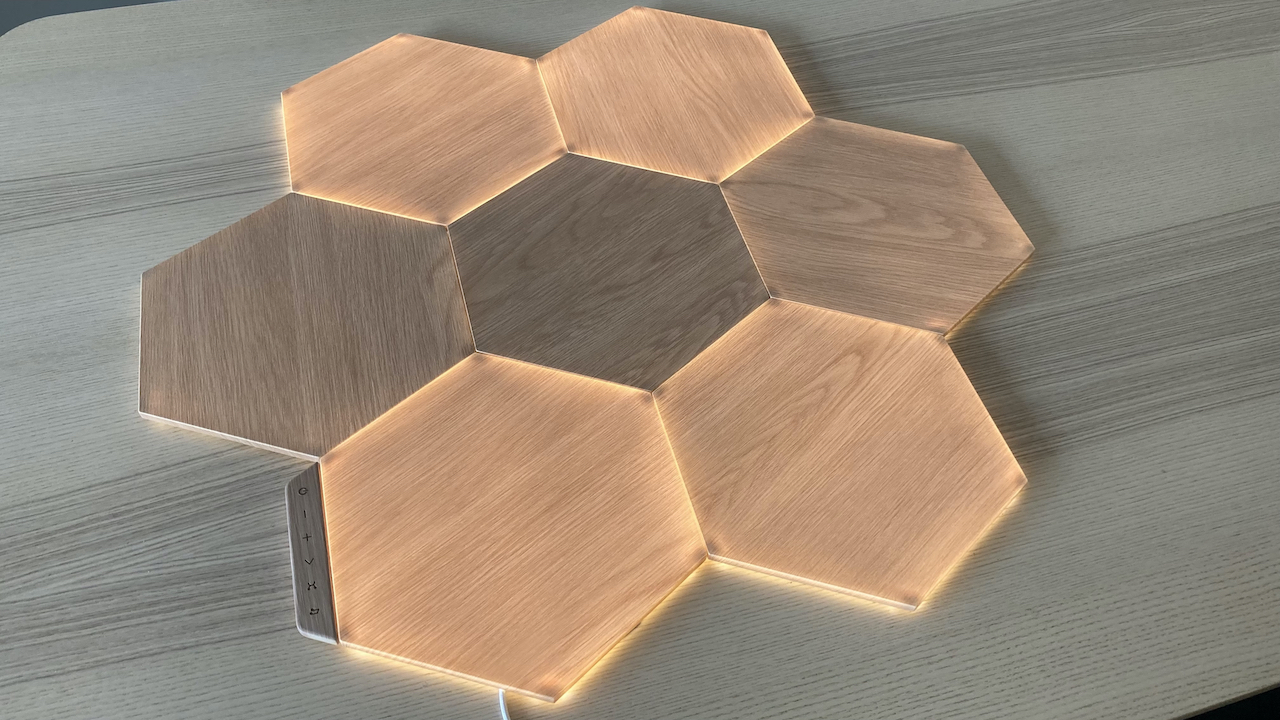
Put simply, the Elements are just Nanoleaf Shapes with a laminate wood grain finish. It’s a series of smart light panels that can display a single colour or dynamic moving Scenes, while also reacting to both touch and sound.
The Elements panels have a white colour temperature range of a warm 1500K to a cool 4000K, which is the equivalent of the glow of candlelight to that of a fluorescent tube. Unlike Nanoleaf’s other smart panels, the Elements don’t support RGB colour – a design choice that might be an instant turn off for some. If you want to light your room like it’s a nightclub or a scene from John Wick, you’ll need to look elsewhere.
Setting it up
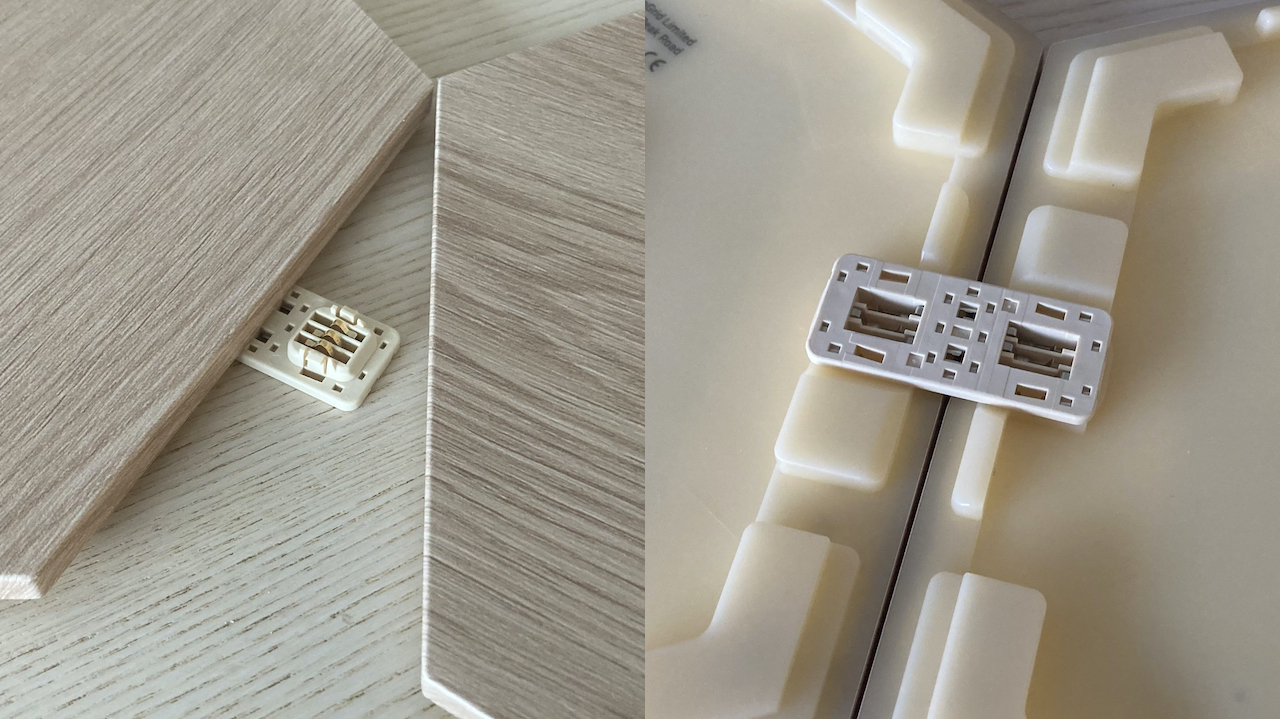
Setting up the Nanoleaf Elements couldn’t be easier. On the back of each panel is a square of adhesive tape which you just need to peel off before sticking it on your wall. This seven-panel starter kit includes eight snap-on linking plates, which will let you connect the panels with another, with one link put aside for the device’s control panel. Its power cable also snaps in.
The Elements are controlled over wi-fi by Nanoleaf’s companion app, which I’d recommend downloading before even opening the box. The app allows you to adjust the colour and brightness of the light panel, while also picking Basic or Scene displays. The app is pretty responsive, and only really slows down if you start picking new Scenes or colours in rapid succession.
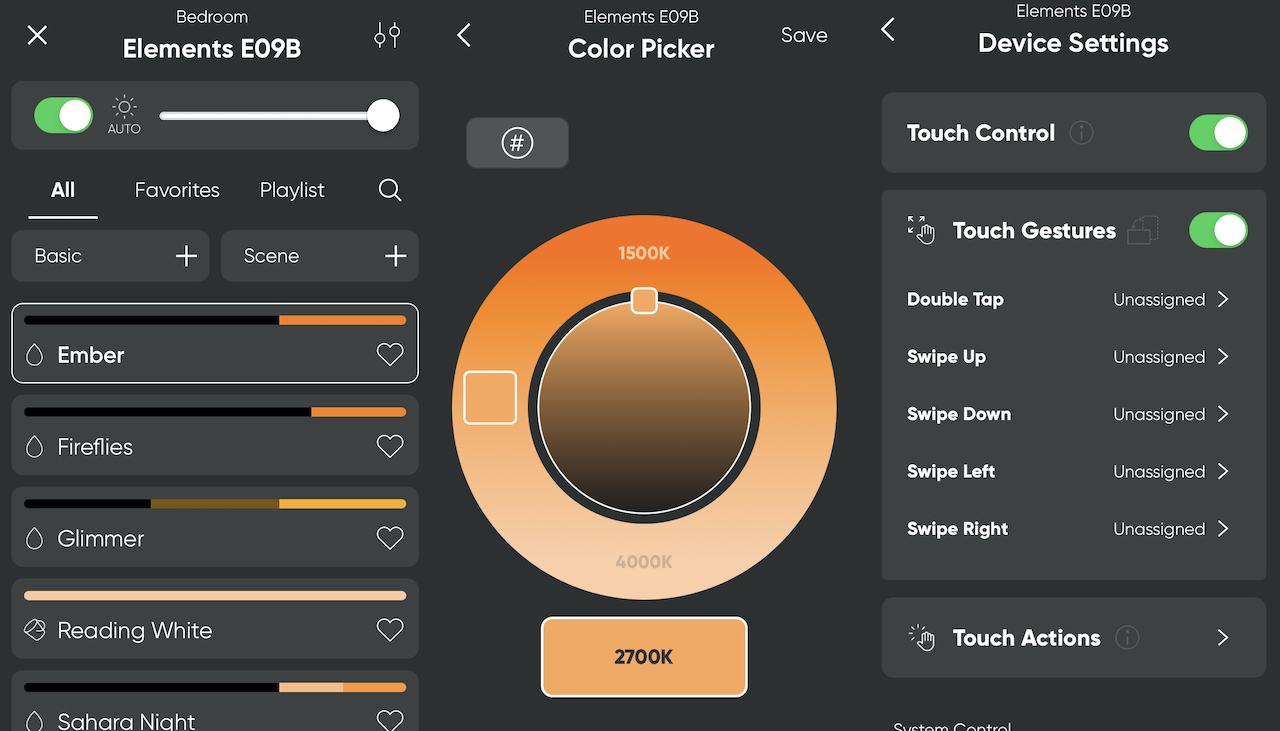
You should also consider your layout before sticking it down and make sure the linking plates are already in place before setting it up. Otherwise, you’ll need to carefully angle the panel off the wall to get the linker in, which runs the risk of peeling the entire thing off. I learnt this the hard way. If you’re not sure how you want to display these lights, the Nanoleaf companion app includes an AR feature that will generate a real-time mockup for you.
I set mine up in a very basic honeycomb design, but the snap connectors give you the freedom to arrange the panels however you want, from a single straight column or wildly asymmetrical. Just make sure you’ve got the room space set out before you commit to your ideal layout. If you’re a stickler for detail, it helps to be aware of which direction each panel’s woodgrain is running before sticking it down, to help make sure everything is uniform.
The Elements panels also respond to touch controls, which you can set up via the companion app. Personally, I preferred to use just the app to control the lights (see: didn’t want to get out of a warm bed to turn them on or off). The device is also compatible with Apple’s Homekit, Google Assistant and Alexa-enabled smart home devices if you’d prefer voice control.
How well does it work?
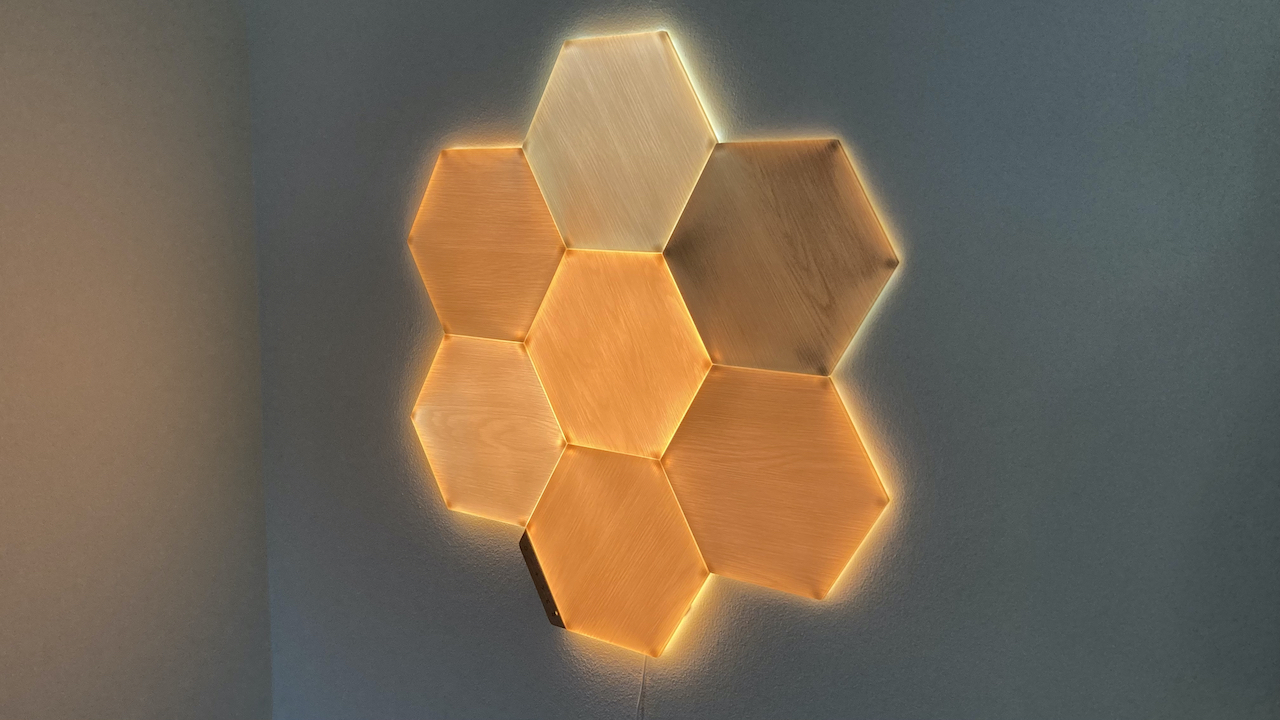
Aesthetically, the Nanoleaf Elements look great. Even when turned off, it makes a nice piece of wall art. In hindsight, I should have set it up in my living room.
By applying some basic colour theory about white light temperatures – warm lights are good for relaxing, while brighter cooler lights help you focus – I was able to change the ambience of my bedroom to better suit my mood. I mostly used the app’s preset Scenes, but if you’re willing to experiment, there’s a lot of customisability available.
Even when running the Elements with the brightest white light possible while I was reading or on my laptop, it never felt overwhelming or like it was aggressively making me focus. The whitest temperature setting isn’t bright enough to light up an entire room, but there’s enough to create a nice ambience and, most importantly, still be able to read a book.
Running a warmer colour temperature creates a more rustic and cosier vibe. One of the preset Scenes mimics the changing glow of a fireplace, which I found incredibly soothing to run during the day. The Elements also have a Circadian Lighting feature, so you can set it to respond to your circadian rhythms via the app.
Touching the panels with your hand will make them react, and it also comes with a mode that will make them react to sounds. The latter is a nice effect if you’re playing some mellow or chill music to complete that cosiness of it all, but kind of a weird experience to see it flashing in response to your voice when you’re talking to someone on the phone.
One small thing that does bug me is that the hexagon corners don’t light up. It’s not a huge deal and doesn’t impact the overall look of these panels, especially when viewed from the other side of the room. It’s one of those things that once you see it, you can’t not see it – like the weirdly long strand of hair that pokes out of your grandpa’s ear.
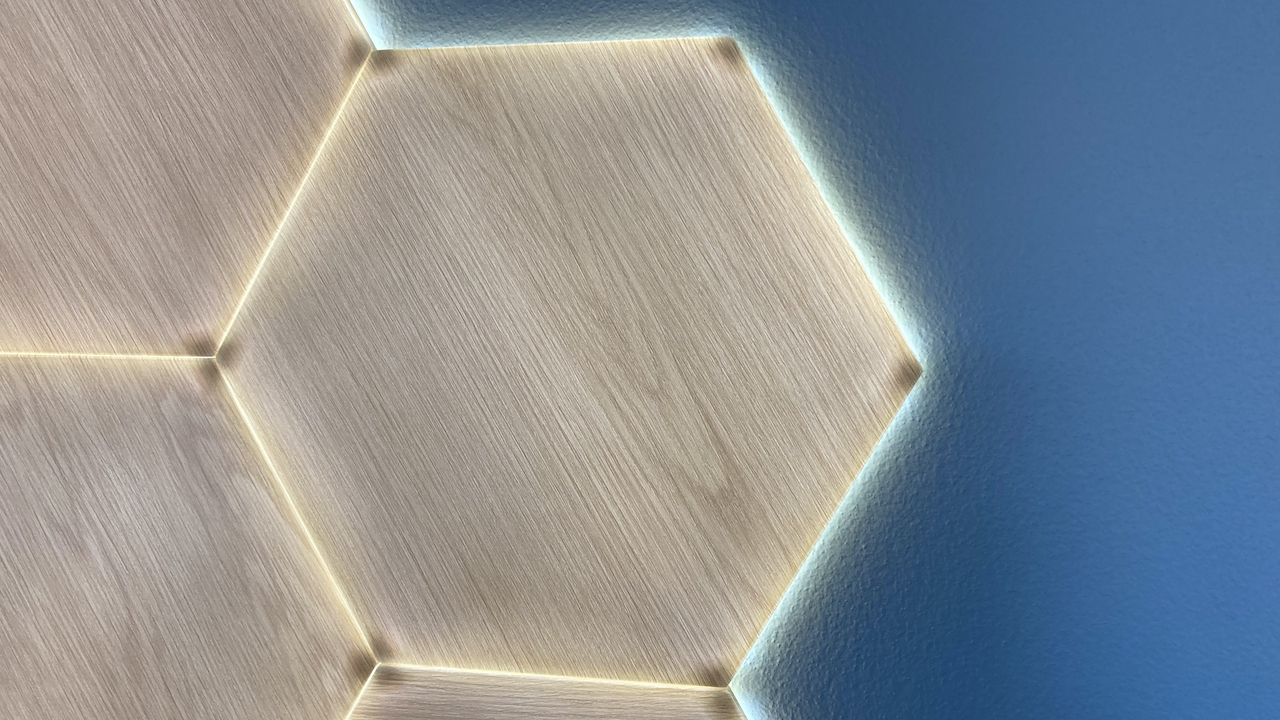
Should you buy it?
As far as smart lights go, I think the Nanoleaf Elements are well-designed and make for a great piece of wall art, both on and off. These panels do a good job of changing up the atmosphere and mood of the room they’re in, and I found it helpful when it came to unwinding after a long day. The Nanoleaf Elements are as aesthetically pleasing as they are functional.
There’s a big a but to all of this. A $399.99-sized but. Nanoleaf’s lighting panels are already quite expensive, but the Elements has taken that price tag to new heights at $400.
It’s a steep ask, especially when the major difference between the Elements and Shapes is the addition of a wood-like finish and lack of RGB lighting. For comparison, Nanoleaf’s five-panel hexagon Shapes starter kit is $229.99, and the nine-panel kit is $349.99.
Is that trade-off worth the extra money? It’s hard to say because I think it really comes down to your personal sense of aesthetics. Personally, I prefer coloured smart lights over plain white ones and I’d be more willing to shell out the money for Shapes panels over these.
If you just want smart lights and don’t particularly care how they look, just the range of colours available, you’re probably better off with the standard Shapes line. If you’re maybe a bit more design-conscious than others or have a home that can be best described as a “mountainside retreat”, you probably know how well these faux-retro Nanoleaf light panels will fit into your current living space just by looking at them. You might just have to wait for a sale before you pick it up.
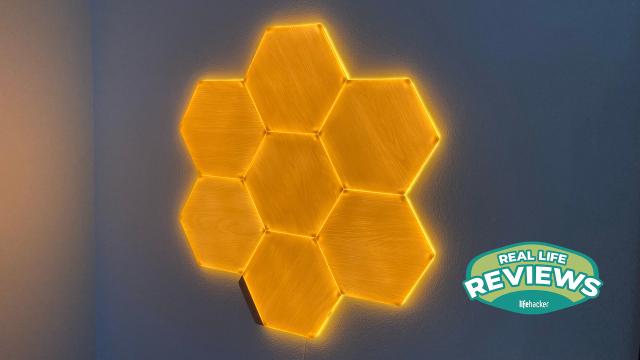
Leave a Reply
You must be logged in to post a comment.